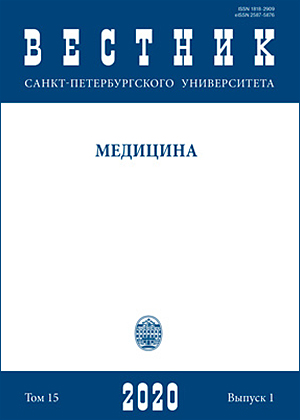Transforming growth factor beta 1. Biological role and clinical significance
DOI:
https://doi.org/10.21638/spbu11.2020.106Аннотация
One of the most important representatives of the cytokine family is the transforming growth factor beta 1 (TGF beta 1). The purpose of the review is to study the biological role and clinical significance of TGF beta 1. Using PubMed databases, eLIBRARY, Google Scholar, keywords “cytokines”, “TGF beta 1” found 25,518 sources, 50 selected for analysis. TGF beta 1 is a polyvalent cytokine first isolated from platelets in the 1990s.TGF beta 1 belongs to the family of dimeric polypeptides with a molecular weight of 25 kDa. The gene encoding TGF beta 1 is found in humans on chromosome 19. TGF beta 1 has a pleiotropic effect on the proliferation and differentiation of a wide range of cells, and therefore regulates many physiologic and pathophysiologic processes: immune response, apoptosis, fibrogenesis, and carcinogenesis. TGF beta 1 has an effect on almost all organs and tissues. TGF beta 1 is a key marker that can be used in the diagnosis of a number of diseases. It is necessary to further study the role of TGF beta 1 in the pathophysiologic mechanisms of various diseases, as well as in the development of approaches to targeted therapy.
Ключевые слова:
transforming growth factor beta 1, TGF beta 1, cytokines, cell proliferation, immune response, carcinogenesis, fibrogenesis
Скачивания
Библиографические ссылки
References
Загрузки
Опубликован
Как цитировать
Выпуск
Раздел
Лицензия
Статьи журнала «Вестник Санкт-Петербургского университета. Медицина» находятся в открытом доступе и распространяются в соответствии с условиями Лицензионного Договора с Санкт-Петербургским государственным университетом, который бесплатно предоставляет авторам неограниченное распространение и самостоятельное архивирование.




